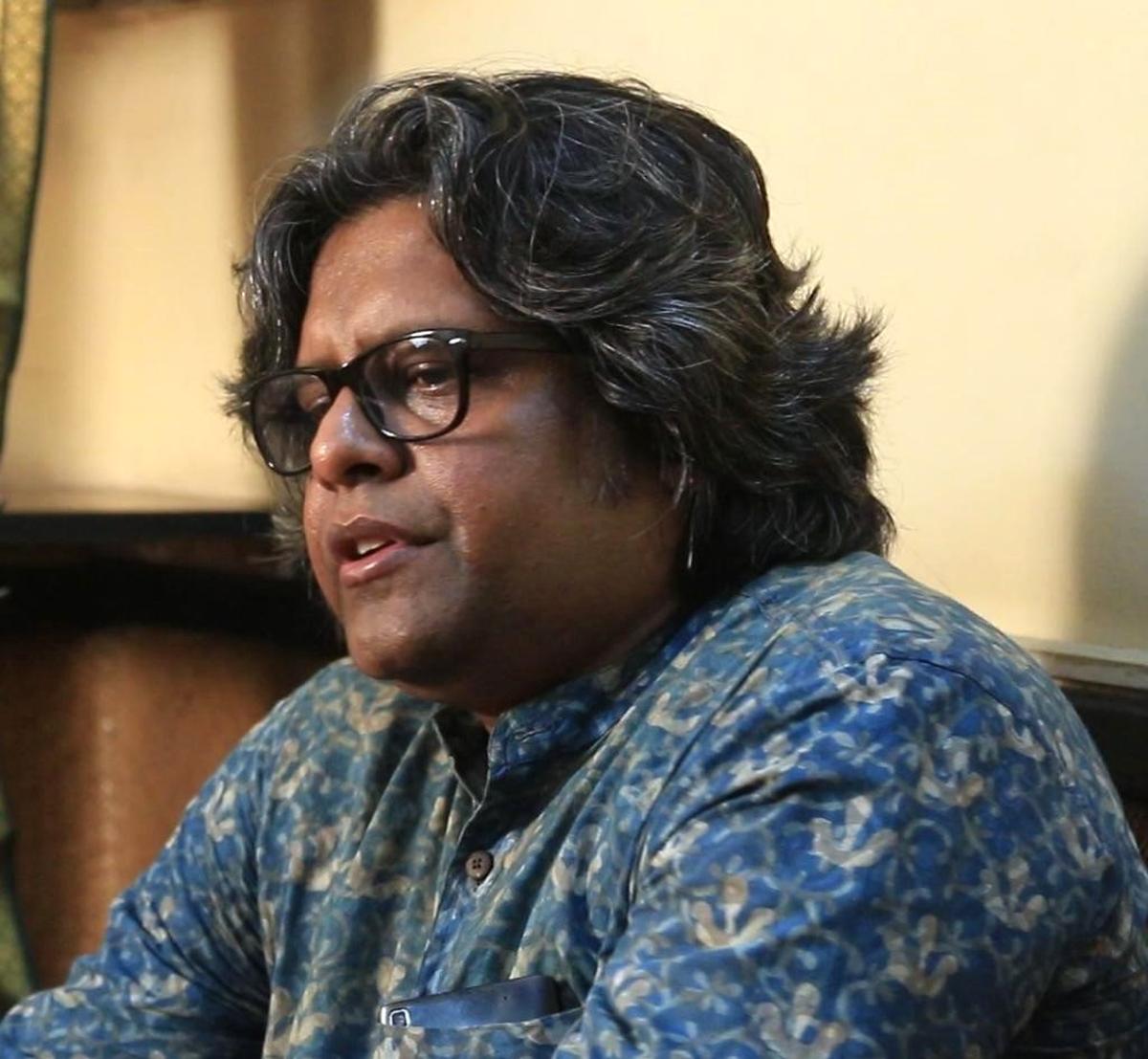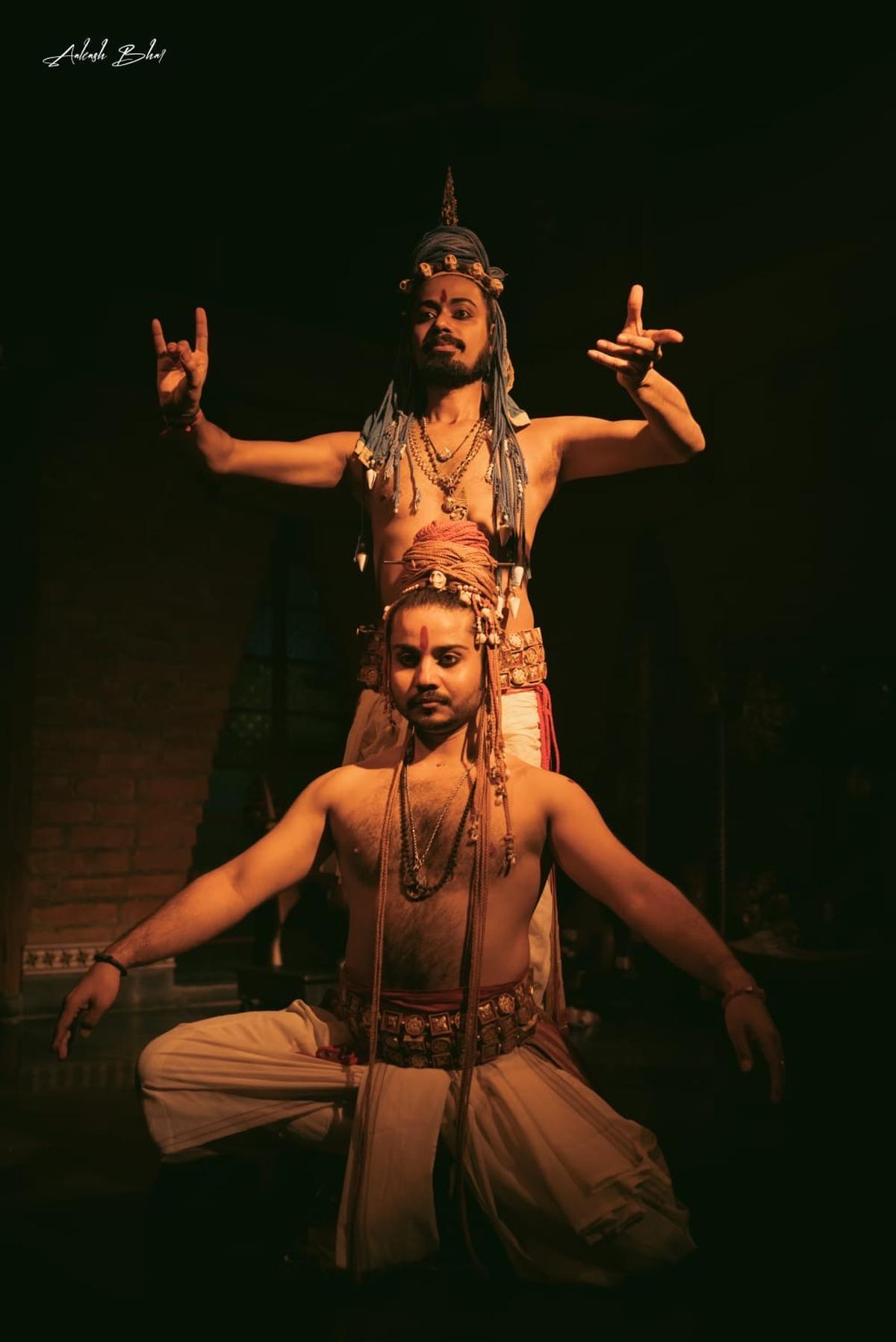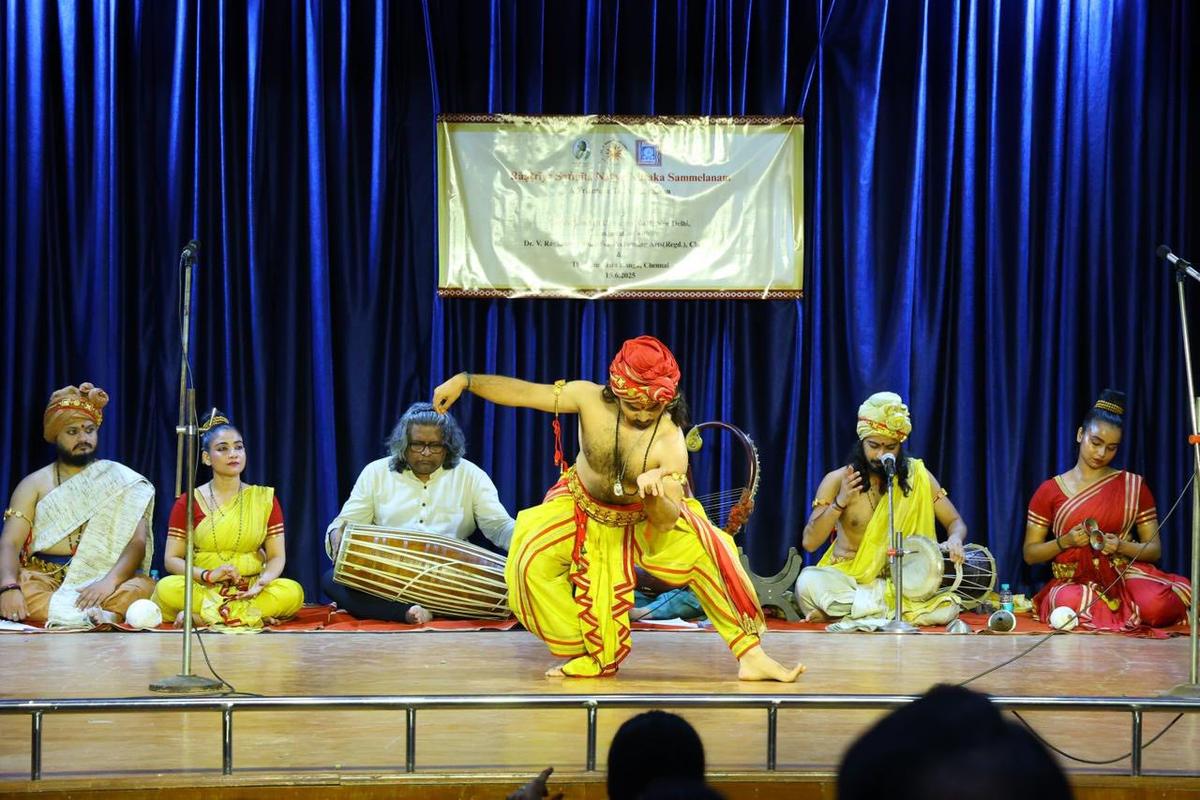
Chidakash Kalalay students performing at Samvatsar Katha
| Photo Credit: Special Arrangement
“’Marga Natya’ is not a form of dance, but a process by which any art practitioner is trained on self-awareness and explores the attributes of — geetham, sangeetham, vadyam, nrityam and natyam — all based on Bharata’s Natyashastra,” says Piyal Bhattacharya, theatre director and scholar from Kolkata, and winner of Sangeet Natak Akademi Award for his contribution to Sanskrit. He established the Chidakash Kalalay Centre of Art and Divinity, which is known for practising ‘Marga Natya’, a methodology evolved by him.
“After studying varied theatre forms in the West such as Brecht and Peter brook. I also delved deeply into Indian classical arts and revisited Sanskrit theatre to come up with the ‘Marga Natya’ method. It simply means a search, focusing on lakshya vasthu. In our country ‘mool lakshya vasthu’ is rasa, which moves towards attaining a state of pure bliss and consciousness,” says Piyal, who spoke about the ‘Marga system of abhinaya and its prime aspects’ at the Rashtriya Sangeet Natya Nataka Sammelanam, organised by Nandini Ramani in Chennai. His lecture was interspersed by performances of his students.

Piyal Bhattacharya
| Photo Credit:
Special Arrangement
”This methodology aims at making the actor aware of his inner voice and the realisation that inner space begins with the understanding of the external space. From cleaning the physical space at our centre and getting comfortable with dogs, cats and birds there to being attuned to others’ psyche — are all a part of the training process.“
“Each actor develops his own approach to visualising a brief or a scene. I don’t enact it for them, but take on the role of a visual editor. This process helps them develop their own individual vocabulary, method and respond holistically in a collective scenario,” says Piyal.
Coming from a family of artistes — Piyal’s father was immersed in the study of dhrupad and mother in Rabindra Sangeet. So his love for the arts surfaced early. Besides music, he trained in Abanindranath Tagore style of painting too.

‘Uparoopak Bhanak’, performed by the students of Piyal Bhattacharya.
| Photo Credit:
Chidakash Kalalay Facebook page
Later, he learnt dance from Tanushree Shankar at Ananda Shankar Dance Academy and was fascinated by Kathakali and learnt it from Govindan Kutty’s disciple, Kaushik Chakravarthy in Kolkata. A desire to pursue Kathakali further, took him to Kerala Kalamandalam, where he studied it for six intense years.
A lecture on Natyashastra by dancer-scholar Padma Subrahmanyam at Swarna Samaroh in 1997, plunged him into a serious study of the text and Sanskrit plays. He also learnt to play the rudraveena from the Dagar family, Saraswati veena, pakhawaj, pung achoba and mizhavu.
“My research is based on scriptures rather than sculpture. After reconstructing dance and theatre concepts, I moved to reconstruct music as mentioned in the Natyashastra. I discovered that there was no living tradition of the prime string instrument mattakokila vina (Indian harp). With the Intangible cultural Heritage Fellowship from Sangeet Natak Akademi, I travelled to Burma to understand the playing techniques of the saung gauk (Burmese harp) and adapted it to our tradition,” says the Piyal, who is also a visiting faculty at National School of Drama, Sikkim.

Students of Chidakash Kalalay performing at the Rashtriya Sangeet Natya Nataka Sammelanam.
| Photo Credit:
Chidakash Kalalay Facebook page
“Sanskrit theatre is not just something where the dialogues are in Sanskrit, but it encompasses many other features such as costume, props, jewellery and dialects present in theatrical traditions. I reworked the jewellery using wooden beads covered with 24 carat gold foil. I wanted revive Sanskrit Naatya tradition as mentioned in the shastras.”
Piyal has directed plays such as Chitra Purvaranga, Uparupaka Banaka, Bhanika, besides adapting five plays of Bhasa: Bhasa Bharathi, Megadhootam and Ritu Samharam of Kalidasa, with his most recent work being Chaturbaani. “My pursuit of theatre is based on reconstructing the medium as envisaged in scriptures and not based on my personal whims,” says Piyal.
Published – September 03, 2025 07:20 pm IST























